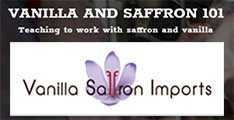Sophie Morris. As well as a social activity, barbecue has become something of a spectator sport, with the Meatopia festival in London and Grillstock in Manchester, Bristol and London. "You can't beat the feeling of community among barbecue lovers," says Mississippi-born chef Brad McDonald, who is opening a new barbecue restaurant Shotgun in Soho this autumn, sharing the flavours from his Southern heritage. "There are so many styles. Fast or slow, you need a real wood-burning fire, no chips or gas. Find the one you love doing the most, and just get perfect at it."
"Barbecue is all about sitting by the coals with a few beers slowly cooking up succulent and delicious meat to share with your friends," says Grillstock co-founder Jon Finch. "The longer it takes to cook, the better; it's a legitimate excuse to sit in the garden drinking beer." The chefs doing barbecue here in the UK are taking inspiration from other cuisines and then making the food their own. We've looked at barbecue ideas from Japan, Thailand, the Middle East and the Basque Country.
The Basque Country
This region is known for its pintxos – delicious bar snacks – and a high number of Michelin-starred restaurants. They also do things with coals there to put burnt sausages to shame.
"The ingredients are simple but unique," explains Nemanja Borjanovic, who owns the Basque restaurant Donostia and will open Lurra, devoted to cooking over hot coals, in September. "We focus on old cows and ox, from eight-year-old retired dairy cows to Galician Blond beef which can reach a grand age of 17 years. This age of the beef means the animals are naturally fatter. This translates to marbling, giving a unique depth of flavour."
It is exactly this beef that has drawn fans to Tomos Parry's Basque-inspired grill at Kitty Fisher's, a restaurant co-owned by Samantha Cameron's brother-in-law and reputedly one of the hardest to get a table at. Vegetables such as gernika peppers, which are similar to the Spanish padrón peppers, are also cooked traditionally over hot coals, and turbot is a speciality. Lurra's chef, Damian Surowiec, spent weeks in Getaria, a small town close to San Sebastián, learning a method of cooking fish in baskets. "The fish is cooked pink and the hot garlic olive oil emulsion, poured at the very end over the fish, seals the flavours," Borjanovic explains. "The re-emergence of barbecue and grilling over charcoal and wood is a result of the British public's inquisitiveness. Culinary-wise, we have come full circle, doing away with intricate dishes and going back to basics – meat over fire."
(read the whole article here)



 Lagun bati bidali
Lagun bati bidali Komentarioa gehitu
Komentarioa gehitu








